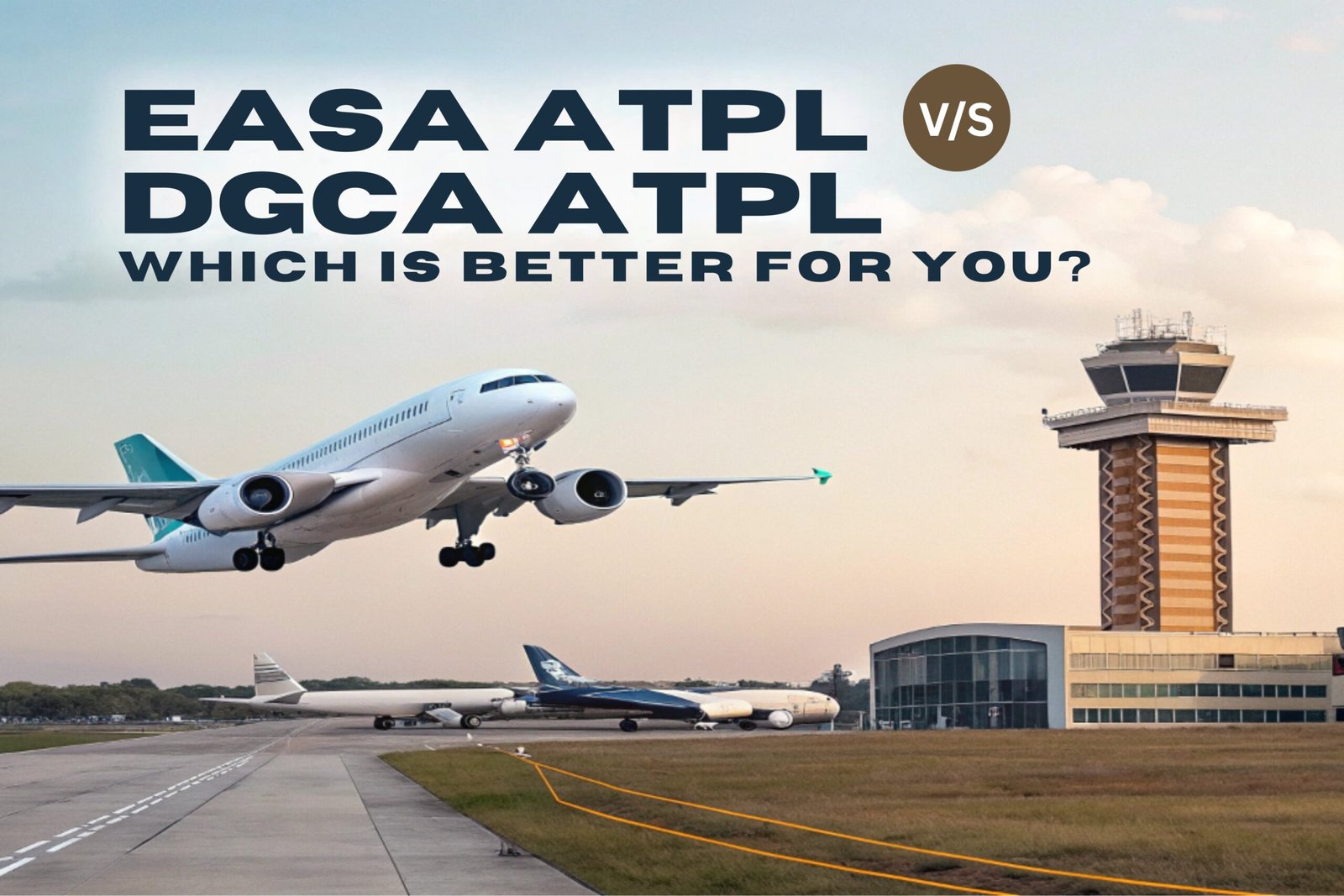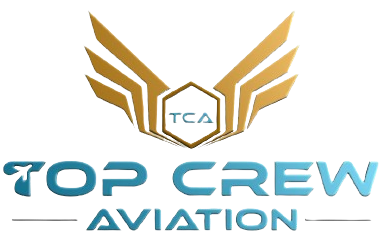
Becoming an airline pilot is a dream for many, but one of the first big decisions you must make is choosing the proper pilot license. For many aspiring pilots, the choice often comes down to EASA ATPL V/S DGCA ATPL.
Both are Airline Transport Pilot Licences, but different authorities issue them and follow other rules, training systems, and career paths. The right choice will depend on where you want to work, your budget, and your long-term career plans.
In this detailed guide, we will compare EASA ATPL and DGCA ATPL in the simplest possible language, explain all steps, give real examples, and help you decide which license is better for you.
What is ATPL? – A Simple Explanation
ATPL stands for Airline Transport Pilot Licence. It is the highest level of pilot certification in the world. With an ATPL, you can work as the Captain (Pilot-in-Command) of a commercial airliner.
Key Points About ATPL:
- It is required for airline captains.
- Different aviation authorities around the world can issue it.
- You must complete theory exams, flight training, and flight hours before getting an ATPL.
- Different countries follow different rules (EASA, DGCA, FAA, CASA, etc.).
Understanding EASA ATPL
What is EASA?
EASA stands for European Union Aviation Safety Agency. It regulates aviation safety in European countries and some associated states.
What is EASA ATPL?
An EASA ATPL allows you to work as a commercial airline pilot in all EASA member states. This means you can fly for airlines in countries like Germany, France, Spain, the Netherlands, Italy, and more.
EASA ATPL Key Features:
- Globally respected license.
- Requires 14 theory exams.
- Training can be done as an integrated (full-time course) or modular (step-by-step).
- High training standards, strict regulations.
Understanding DGCA ATPL
What is DGCA?
DGCA stands for Directorate General of Civil Aviation. It is the aviation regulatory body of India.
What is DGCA ATPL?
A DGCA ATPL allows you to work as an airline captain in India. It is recognized by all Indian airlines and can be converted into other licenses if needed.
DGCA ATPL Key Features:
- Required for captain positions in Indian airlines.
- Requires three theory exams (Navigation, Radio Aids, Meteorology).
- Minimum 1500 flight hours for full ATPL privileges.
- Medical check under DGCA Class 1 standards.
Training Process: EASA ATPL V/S DGCA ATPL
EASA ATPL Training Path
There are two main training paths:
1. Integrated Training (Full-time course)
- Duration: 18–24 months.
- You join a flight school and complete all training in one program.
- Covers both CPL and ATPL theory.
2. Modular Training (Step-by-step)
You can complete different stages separately:
- Private Pilot Licence (PPL)
- Hour building
- Commercial Pilot Licence (CPL)
- Instrument Rating (IR)
- ATPL theory exams
- It takes longer but is more flexible.
DGCA ATPL Training Path
- Most Indian pilots first get a CPL (Commercial Pilot Licence) in India or abroad.
- They then pass DGCA ATPL theory exams.
- Build up to 1500 flight hours.
- Apply for ATPL when requirements are met.
Theory Exams: EASA vs DGCA
| Aspect | EASA ATPL | DGCA ATPL |
| Number of Exams | 14 subjects | 3 subjects |
| Difficulty | High – covers global topics | Moderate – focused on India |
| Passing Marks | 75% | 70% |
| Duration | 6–12 months study | 2–4 months study |
EASA Exam Subjects:
- Air Law
- Aircraft General Knowledge
- Flight Planning
- Meteorology
- Navigation
- Principles of Flight
- Operational Procedures
- Performance
- Mass and Balance
- And more…
DGCA Exam Subjects:
- Navigation
- Radio Aids
- Meteorology
In both EASA ATPL and DGCA ATPL, the theory syllabus plays a big role in your training journey. To understand every subject, module, and exam pattern in detail, check out our ATPL syllabus explained guide.
Medical Requirements
Both require a Class 1 Medical Certificate, but the standards are slightly different.
EASA Medical:
- Conducted by EASA-approved doctors.
- Tests vision, hearing, ECG, lung function, and blood tests.
DGCA Medical:
- Conducted by DGCA-approved doctors in India.
- Similar tests, but some criteria may differ slightly.
Flight Hour Requirements
- EASA ATPL: You can get a frozen ATPL with fewer hours and upgrade to full ATPL after 1500 hours.
- DGCA ATPL: Requires 1500 hours before issue.
Costs: EASA ATPL vs DGCA ATPL
EASA ATPL Training Cost:
- Integrated: €70,000–€120,000 (~₹65–₹110 lakh).
- Modular: €50,000–€90,000 (~₹45–₹82 lakh).
DGCA ATPL Training Cost:
- CPL in India: ₹35–₹60 lakh.
- ATPL upgrade cost is lower (mainly exam fees + flying hours).
Career Opportunities
EASA ATPL Jobs:
- European airlines (Lufthansa, KLM, Air France).
- Middle Eastern airlines (Emirates, Qatar Airways).
- Some Asian carriers.
DGCA ATPL Jobs:
- Indian airlines (Air India, Indigo, Vistara).
- Private/corporate jets in India.
License Recognition
- EASA ATPL – Highly recognized internationally.
- DGCA ATPL – Recognized mainly in India.
Conversion Process
EASA to DGCA:
- Pass DGCA theory exams.
- Convert medical to DGCA Class 1.
DGCA to EASA:
- Pass 14 EASA theory exams.
- Flight check as per EASA rules.
Which Should You Choose?
- If you want to work in Europe or the Middle East, choose EASA ATPL.
- If you’re going to work in India, select ATPL DGCA.
Pros and Cons Table
| EASA ATPL Pros | EASA ATPL Cons |
| Global recognition | Expensive |
| Faster integrated course | Harder exams |
| More airline options | May need conversion in India |
| DGCA ATPL Pros | DGCA ATPL Cons |
| Cheaper | Limited international scope |
| Easy to start in India | Takes longer in some cases |
Conclusion
Choosing between EASA ATPL and DGCA ATPL is not just about exams or training costs — it’s about where you see your career taking off.
If your dream is to fly internationally, work for European or Middle Eastern airlines, and have the flexibility to work in multiple countries, the EASA ATPL is the better choice. It comes with stricter training standards, more exams, and higher costs, but it rewards you with global recognition and broader career opportunities.
If your main goal is to build a career in India, work for Indian airlines, and have a more budget-friendly training journey, the DGCA ATPL is the practical choice. While it offers fewer direct global opportunities, it is ideally suited for the Indian aviation market and can still be converted later if you decide to work abroad.
FAQ’S
1. Which license is harder, EASA ATPL or DGCA ATPL?
EASA ATPL is more challenging due to its 14 theory exams, compared to DGCA ATPL’s three exams.
2. Can I convert EASA ATPL to DGCA ATPL?
Yes, but you must clear DGCA theory exams, pass DGCA medicals, and meet flying hour requirements.
3. Which license is cheaper to get?
DGCA ATPL is cheaper, especially if training is done in India.
4. Which license gives more global opportunities?
EASA ATPL offers wider international job options.
5. Can I work in India with an EASA ATPL?
Yes, but you need to convert it to DGCA ATPL first.
Frequently Asked Questions
No FAQs found.



